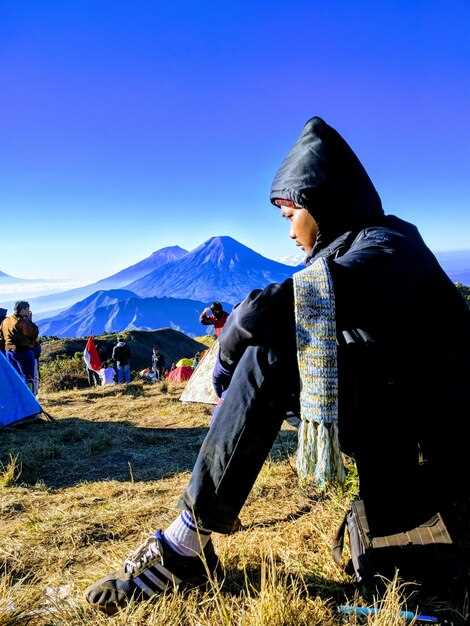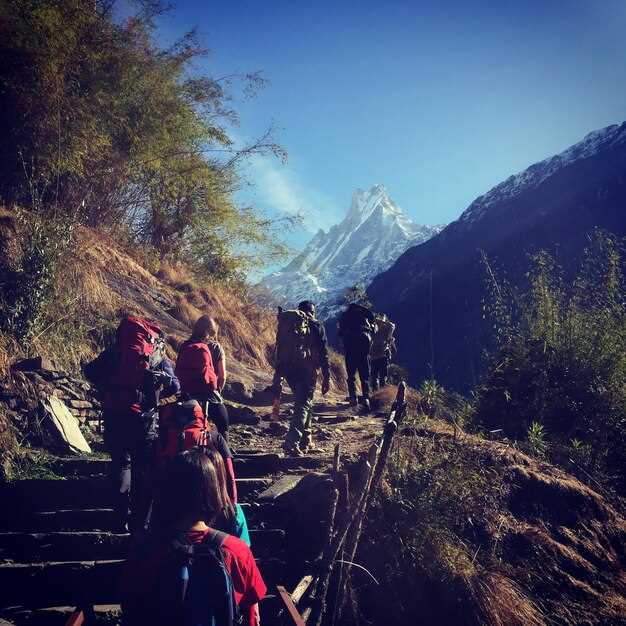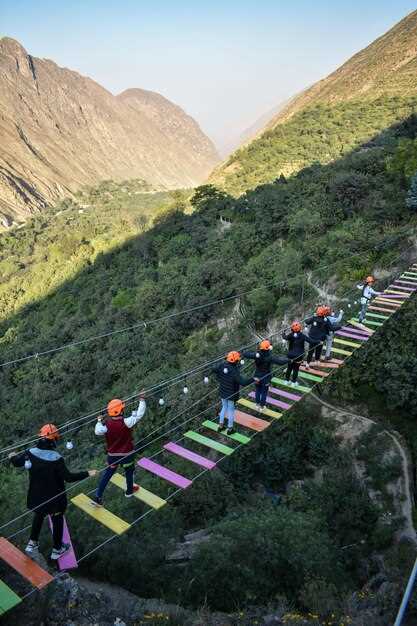
Recommendation: Begin at dawn, cover the initial segment while the air is clear, and plan for a 6–8 km daily distance with a 300–500 m ascent. Pack a poncho, a lightweight rain shell, and ensure your lodging has reliable heating. Hotels along the line provide warm meals after dusk, making altitude easier to manage.
Across four days, the total distance runs around 22–28 km, with most days between 5–9 km and modest vertical gain; the highest point sits near 3,000 m, offering views of distant mountain ranges and forest trails. A local guide can tailor the pace, ensuring some groups finish ahead of schedule while others take a more relaxed rhythm to savor the atmosphere and the countryside you move through, brought to life by local culture among villagers.
Terrain alternates between fields and forest, with the path climbing toward a ridge that reveals distant mountain views. The route supports some treks across the region, and the pace can be adjusted by a local guide. For extra adventure, add an optional side detour toward a balcony viewpoint, especially when the morning air is crisp.
Gear and comfort: dress in layers, carry a wind shell, and keep a poncho handy for sudden showers. Hotels along the way provide hot meals, while tea houses offer a chance to interact with locals. The sky at dusk brings a calm atmosphere and bright stars above the high ranges, with occasional glimpses of manaslu and dhaulagiri among the distant peaks. This experience is highly rewarding for another group of travelers seeking a short adventure in the hills.
Seasonal timing matters: autumn and spring deliver clearer mornings, while the monsoon can bring muddy trails. Some days require firm steps across rocky sections, yet the overall distance remains manageable for fit hikers. To maximize safety, hire a guide, carry a light poncho, and check weather forecasts in the morning, particularly if you aim to reach viewpoints towards the ranges of manaslu and dhaualagiri. Among the best choices, choose hotels with reliable heat and water, and enjoy the tranquil atmosphere that surrounds the village fields as you complete each day of this short journey.
Day 4 route breakdown: Astam to Pokhara – distance, elevation, terrain, and expected pace
Begin at first light from Astam and descend toward the lakeside hub, finishing before noon. Distance: 16–18 kilometers (10–11 miles). Elevation change: −900 to −1100 meters (−2950 to −3600 feet). Terrain blends carved terraces and stone steps, shaded fields in farmer zones, short forested sections, and a few river-bed crossings. Daytime pace should stay around 3–4 km/h, with slower segments on climbs; plan a total window of 6–6.5 hours including rests.
The route profile delivers panoramic views across regional landscapes, useful for photo stops at a dedicated point along a ridge. Expect interactions with locals and people at tiny teahouses, where a quick coffee is a welcome pick‑me‑up. This leg passes through fields and terraces that showcase traditional farming life, offering knowledge about the country’s rural rhythms from a guide and locals alike. The mid‑section provides a shaded pause in summer heat, especially valuable when the sun is high in daytime.
Asked for durability metrics, the descent remains easily manageable for most fit trekkers, but variability exists: rocky patches, uneven steps, and occasional stream crossings can slow pace by 10–20 minutes per tricky section. The verified route notes from base and guide teams align, making distance and elevation expectations consistent across seasons. In Summer heat, keep a steady rhythm and hydrate often; the coffee stops are spread to preserve daytime momentum without losing the scenic value.
Practical planning centers on kathmandu as the common base for logistics. Most travelers arrive there to arrange transport and a personal briefing with a guide, then thread toward the start on the first day. Spending on basic meals and guesthouse stays along the road remains modest; 5-star options are rare on this stretch, but comfortable stay choices exist near the final stop for those who want a relaxed finish. The overall experience emphasizes locals, simple hospitality, and a chance to reflect on country life after a day on trail, a true point for many treks to begin or end with.
In sum, the distance and elevation figures point to a steady downhill cadence, a panoramic payoff, and a personal sense of achievement. With a well‑titted pace–especially if you push for an early finish–you can wrap the journey into a single city afternoon or evening and savor a nighttime stroll by the shore, reflecting on summer light, the locals’ warmth, and the volume of knowledge gained along the way.
Gear and clothing checklist for a 10km day hike and a 1-hour drive
Recommendation: use a 25–28 L daypack, arrange layers and essentials in accessible pockets, and deploy a three-layer system: base, mid, and outer shell. Temperatures can range from 5 to 22 degrees Celsius, so plan for the stretch to the lake and back until you reach the turning point for return.
Footwear: sturdy mid-weight trail shoes with a grippy tread; wear ankle support if available; pair with two socks (liner and outer) and bring a spare dry pair. Top off with a brimmed hat, sunglasses, and SPF 30+ sunscreen; keep the spare socks in a dry bag for convenience.
Clothing details for april and june mornings: a light fleece or insulated layer; in serene conditions near phedi, temps can dip; carry a compact rain shell and pack the mid-layer in the top pocket to shed as it warms; there’s there to stay comfortable at higher elevations and within reach of a quick adjustment.
Backpack organization: heavy items close to your spine to improve balance; side pockets for water bottle; top pocket for snacks; use dry bags to protect electronics and a spare jacket; arrange the first-aid kit, headlamp, and power bank for quick access without stopping at the main compartment.
Hydration and nutrition: 2–3 liters of mineral water depending on weather; electrolyte sachets help maintain balance; snacks should include three options like energy bars, nuts, and rice cakes; choose mineral-rich, rich options to sustain energy on the road and during the adventure.
Safety extras: headlamp with spare batteries; map or offline route; whistle; personal ID and emergency contact; small first-aid kit with blister treatment; if meeting locals like Thupten, ask for route tips; leave room in the pack for a light rain jacket and a compact emergency blanket, and be prepared for varied conditions.
Personal and adventure considerations
This plan suits a weekend escape or when visiting nearby towns; know various routes around the area and pace yourself; there are lake views and serene scenery that invite immersion, and speaking with locals enhances the experience. The route can become challenging if pushed too hard, yet it remains an opportunity to immerse in culture, personal growth, and authentic adventure; Austrian travelers often join such pujas, bringing their own gear and tips, which broadens knowledge and connection with people and place.
Optional gear for comfort and safety
Bring a compact sit pad for rest at phedi stops; a lightweight towel, reusable cup, and a small rain cover for the bag add comfort without bulk; consider a compact power bank, charging cable, and spare SIM card if visiting a city area; always know there is time to stay hydrated and relaxed, and keep a plan to return before dusk.
Food, water, and tea-house options along the Astam to gateway-city segment

Carrying a compact water purifier and opting for teahouses that provide boiled water and verified meals is the best starter for this leg; taking this approach keeps you safe and well-fed between stops.
Water provisions and safety
- Boiled water is standard at most teahouses along the route; you typically pay a small fee or it’s included with a meal; always request it hot.
- Carry chemical tablets or a lightweight gravity filter for between-stops, especially after rain when sources can be turbid.
- Riverside sources may look clean but can carry sediments; treat or boil water you drink directly unless you’re using a trusted purifier.
Food options and meal structure
- Dal bhat with lentil soup and vegetables is the reliable full meal, usually around 350–650 NPR per person; refills are common and flavors are rich and amazing.
- Alternatives include thukpa, momo, curries with rice, and fresh greens; breakfast often features porridge, eggs, and local bread.
- In april, weekend crowds can push some items toward the limits; order early to secure what you want for the day.
- Whats the best option for a mid-day bite? A dal bhat set or a hot noodle bowl from a village teahouse often hits the spot and keeps you full for the next walk.
Tea-house lodging and rooms
- Rooms range from basic twins to comfortable singles with private baths; some places advertise 5-star rooms, but these are rare and pricier.
- Most places provide warm bedding, reliable lighting, and charging points; some are providing solar charging and limited wifi.
- When booking, clarify what’s included: hot water, towel, soap, and whether meals are part of the rate; this helps you compare value around the route.
- Nearby villages near Manaslu offer amazing hospitality; staying in a village teahouse gives you a richer experience than a large lodge in the same area.
Practical pacing and traveler tips
- Walk between teahouses typically 30-minute segments depending on elevation; the route continues through several village clusters near the Manaslu corridor.
- What’s suitable for a weekend escape may differ from a longer itinerary; seeking comfort? book ahead in the gateway hub and aim for a morning arrival.
- Requirements for gear: a compact sleeping bag, a warm layer for nights around 0–5 degrees, and a light stove for tea or instant noodles can improve options.
- In april, daylight is long and weather is generally clear; mornings can be chilly, so wear a light fleece and hat before sunrise.
Additional notes for planning
- Some lodges advertising 5-star rooms provide premium options, but real value often lies in clean, cozy rooms with hot water and reliable meals.
- Bus liners and other transport options exist near the gateway hub, but for the Astam-to-stop stretch most travellers rely on walking between settlements.
- Seizing the chance to sample greens and dal preparations offers a world of flavors; local kitchens emphasize fresh produce and simple, nourishing meals.
- If you hear about longer transfers, ask staff for the current schedule; many services run only in the morning or late afternoon, so plan accordingly.
Safety considerations, weather cues, and trail conditions for Day 4

Begin Day 4 by checking the morning forecast and starting at first light to avoid afternoon heat and sudden rain; carry a lightweight wind layer and a sun sleeve, tie hair back, and prepare for covering 6–12 kilometers of varied terrain along the langtang region.
Weather cues to monitor during the day include rising clouds on exposed slopes, gusts from the west, and a drop in temperature after midday; in the month with higher humidity, brief showers are common, so plan for short breaks under shelter and use covering when needed; trekkers may pause at a village clearing for a picnic and, if time allows, add a visit to the phewa area, a relaxing option.
Trail surfaces range from packed earth to slick scree; cumulative elevation gain on Day 4 ranges 400–900 meters, making the final stretch a climb with moderate to challenging difficulty depending on weather; wear long pants and watch for loose stones.
Booking ahead for accommodation in the last village helps avoid end-of-day shortages; a 2-day extension can enable a visit kathmandu after completing this route, while a separate segment of the itinerary may include a light adventure and other activities; knowledge of altitude effects and a calm pace begin with mindful breathing and a quick check of hydration, and the safety protocol continues into the next day.
Booking details: inclusions, price structure, and how to tailor the Trek
Opt for a private nepali guide to tailor the daily pace, make stops in lush village settings, and adjust distance covered; there you can modify the plan to suit the group and take more time for interactively learning about local life along a simple himal corridor.
Inclusions
The package includes a seasoned nepali guide, a dedicated porter, simple teahouse lodging, delicious meals (breakfast, lunch, dinner) with some snack options, and mealfood selections prepared in advance. Permits and entry fees for the protected area are covered, along with basic first aid and emergency communication gear. Transfers to the starting point and return connections are arranged, and water is provided at each tea house. Additionally, you’ll find there are simple lessons on village life and daily routines, which makes the journey richer.
Pricing and tailoring options
Prices are per person and vary by group size and service level. A small-group option starts at 370 USD per person; private-guide arrangements run around 520 USD per person, including porter support and teahouse lodging. A single-room surcharge of about 60 USD applies if requested. Typical daily distance ranges from 4 to 6 miles (6–9 km) per day, totaling 12–18 km over 3–4 days. The route includes multiple stops with chances for a close glimpse of machapuchhre and other Himalayan peaks. During the summer, mornings are cooler and afternoons warmer, yet the journey continues with much scenery and there are more opportunities for a tibet-influenced market visit if added. There are many nepali communities along the way where you can interact with locals. There were also options to extend the loop for those who want more, or add acclimatization days. Additionally, pacing can be adjusted, and a relaxed village walk can be substituted for a strenuous afternoon segment to suit their preferences.
| Component | Inclusions / Notes | Price (USD) |
|---|---|---|
| Guide and porter | English-speaking nepali guide; local assistant; safety gear | 370–520 per person |
| Meals and lodging | delicious breakfast, lunch, dinner; simple teahouse rooms; mealfood options | included |
| Permits and fees | area entry permit; TIMS; conservation fees | included |
| Transfers | pickup and drop-off from designated point | included |
| Upgrade options | twin-sharing option; single-room surcharge | 60 extra (if chosen) |

